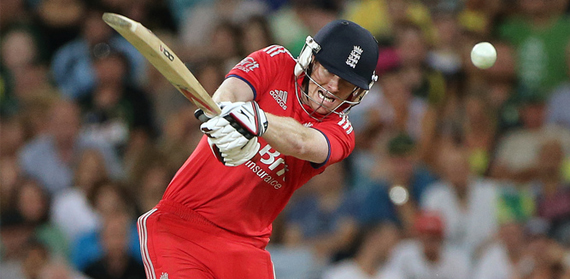England’s Football Association (FA) has revealed plans to accommodate the “B teams” of Premier League clubs further down the league system. FA chairman Greg Dyke emphasised such a move is necessary in order to improve the England national team.
The resulting outcry from across English football was deafening. Everyone from managers to the owners of lower league clubs and local fan groups expressed their contempt for what they saw as a divisive move prompted by greedy Premier League clubs. Many claim the change will sound the death knell for lower league football and, indeed, for the English game’s historic fabric.
It’s not just football where sporting bosses get stick for trying to introduce new ideas. Earlier this year, motor racing’s Formula 1 World Championship began with teams competing under new rules aimed at promoting cost efficiency and reducing environmental damage. While the powers that be may have had good intentions, the subsequent reaction has often been negative. F1 teams have complained about development costs and the prospect of poor initial car reliability, while senior figures in the sport such as Bernie Ecclestone have said the new generation of cars is far too quiet.
Add to this some other recent cases – for example, UEFA’s plan to play the 2020 European Championship across several countries (and the criticism that raged in response) – and one is left to reflect upon the words of Abraham Lincoln: “You can please some of the people some of the time, all of the people some of the time, some of the people all of the time, but you can never please all of the people all of the time.”
Could you do any better?
So, moving into full professorial mode, here is some homework for you: design a competition that will take place in your favourite sport.
Any questions?
Some of you could be wondering: why should we do this? A great first response, and exactly the kind of question that you and sports administrators should ask. For those who devised cricket’s Twenty20 format, the answer to such a question was: the declining popularity of other forms of cricket; time impoverished spectators seeking new ways of watching the sport; the need to create more compelling spectacles that would appeal to global media corporations; and sponsorship and merchandising revenues.

EPA
A second question might be: who is your new competition for? The default reaction for most of us is likely to be “the fans”, and with good reason. But what about the competitors themselves, the teams they play for and, as in the case of the FA’s “B teams” plan, what about links to the national squad?
What about the grassroots level, the lifeblood of any sport? Where and how might media corporations, sponsors and other commercial partners fit into your design plans? Consider too, local communities; after all, it is in their towns and cities that your competition will be staged. The list of stakeholders can seem endless and getting everyone on board may appear to be an insurmountable challenge.
Short-form sports?
By now you should have a notion about the context within which you will design your competition – who it is for and why you are doing it. Keeping the context in mind: what format will the competition take? Twenty20 cricket started a trend towards short-format sports, which has subsequently seen similar such initiatives in the likes of snooker and golf. Short format sports truncate traditionally lengthy contests into sharp bursts; in the case of cricket, from five days for a test match to three hours for a Twenty20 match. In football, there are 11 and five-a-side formats as well as futsal, street soccer and others.
It might help to conceive of the competition format in conjunction with developing a structure for it: will it be a league, an annual event, once every four years or simply a one-off? If you have, for instance, a league in mind, is it closed or open? While basketball in North America – the NBA – is a closed league, with no promotion or relegation, and membership determined on a franchise basis, membership of football leagues in Europe is generally determined by annual promotions and relegations.

EPA
And then there are the rules, which will need to account for everything from the time at which a match or contest starts, through to where and how technology should be used, the size of sponsor logos on shirts, procedures for dealing with injuries and the specifications for the size of a pitch or field.
This is no easy task; take the case of punishing players. Sports such as ice hockey employ “sin bins” for dealing with offending players while others, such as football, do not. Supporters of the former argue that “in game” punishment is a fair and an equitable way of dealing with disciplinary matters. Supporters of the latter feel “sin bins” disrupt the flow of a game. In your competition, what disciplinary rules are needed and what, if any, should the subsequent punishment be?
You should by now have a well laid-out and detailed plan for your new competition. I bet you have found this exercise easy and the plan looks good. Correct? Or perhaps you actually found the task quite difficult?
Those responsible for governing our sports are often criticised, admonished and mocked for being too slow, too controversial or too introspective in organising and managing sports competitions. But designing sports competitions is never easy. In a rapidly changing world and with numerous stakeholders seeking to assert influence, getting a competition right can seem like an impossible task.
As such, the next time your favourite sport changes its rules or adopts a new format, ask yourself a question: is this the best way and what are the alternatives? But that’s your homework for another time.
![]()
Simon Chadwick does not work for, consult to, own shares in or receive funding from any company or organisation that would benefit from this article, and has no relevant affiliations.
This article was originally published on The Conversation.
Read the original article.




Comments are disabled